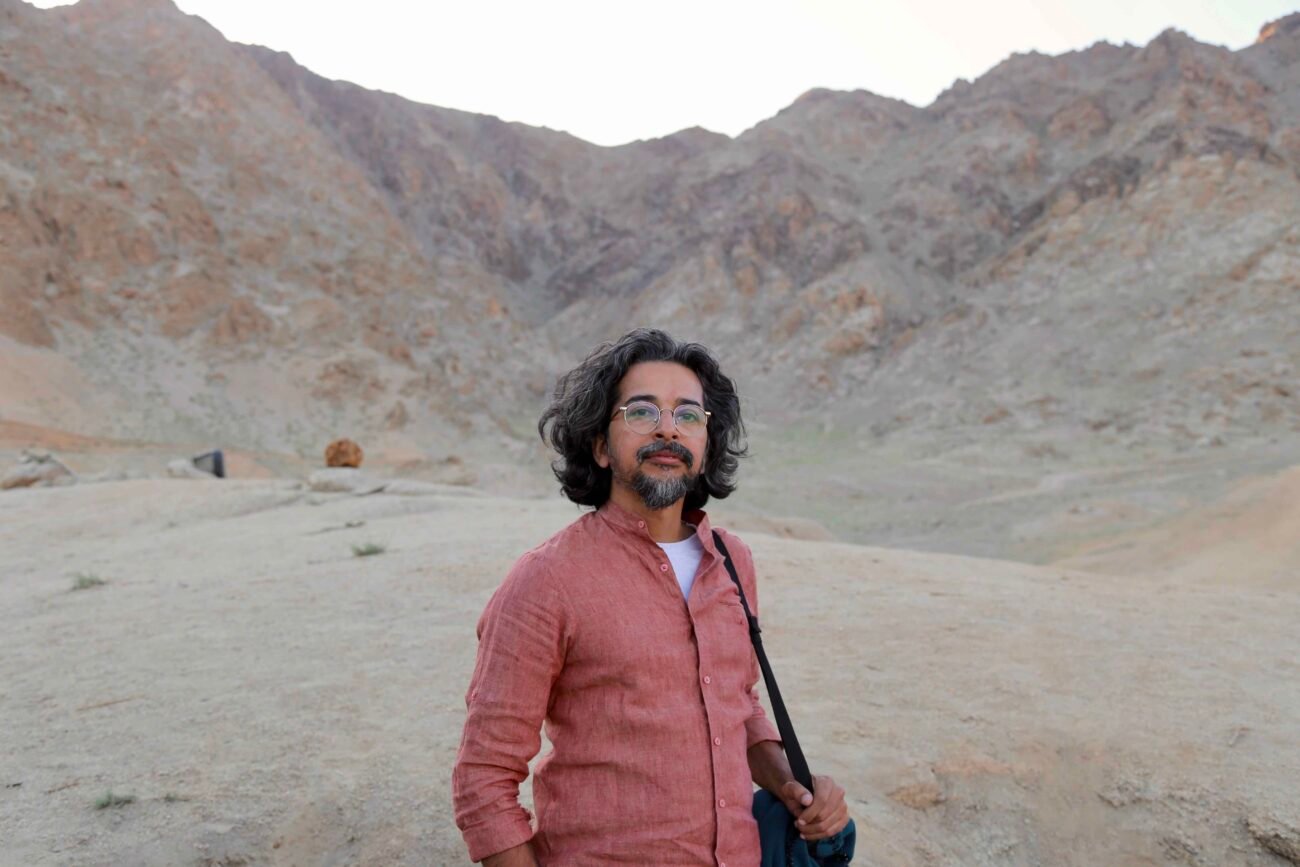
Photographer Sharbendu De Explores Climate And Community
LADAKH, (IANS) – It is barren all around. Nothing grows, the only reminder of life is the consistent growling of the wind. A still life… But we talk about the forest, the enigmatic dense ones he crossed to live in a place far removed from the world most prefer to call real. After all, magic is not something distant or far-fetched for photographer and scholar Sharbendu De, but in fact a constant reminder of the existence of a dual world.
While in Ladakh for the debut edition of ‘Sa Ladakh’, Asia’s highest-ever contemporary land art exhibition exploring climate, culture and community, supported by the German embassy in India, this conceptual photographer, a 2022 Visiting Artist Fellow at Harvard University through projections, put forward his thoughts on the capitalist machinery of megacities, our myopic self-centrism and disregard for nature, leading to calamities like global warming, glacial ice-melting, crop failures, air pollution, etc.
Born in the Andaman and Nicobar Islands, De, who has been covering calamities — the Asian Tsunami, Nepal Earthquake, Kashmir floods etc. insists he does not have the urge to do the same as a photojournalist.
“I saw how the Asian Tsunami destroyed my island — there was a feeling that I owed something to my home, and it ‘trained’ me in a certain way. Once back from England after studying photography, I got contracts to cover a lot of natural tragedies and worked on natural disasters. However, post the Nepal earthquake, it became too much for me…”
Best known for his work ‘Imagined Homeland’ made over seven years (2013-19), for which he adopted a peculiar approach to telling the story of the Lisus people in Arunachal Pradesh and their relationship with nature — the intangible cultural assets that define and distinguish them from the urban monetized societies, he adds, “I rooted my practice in ethnographic research, extensive fieldwork, journalistic interviews and borrowed from dream symbolism and adopted magic realism and poetic aesthetics that define and distinguish them from the urban monetized societies.”
“The forest is alive in almost all senses of the word. While I went in with an egocentric mind, as I kept on with the strenuous journey, the terrain chipped away all my ego. Don’t forget, it took three days of walking through the jungle to reach where I did.”
Also, a teacher of photography at different institutes, De smiles that he shares a love-hate relationship with the academic side of the art form.
“I notice a resistance to theory, as photography is mostly perceived as practice. However, a lot more emphasis is needed on how to go deeper. Great pictures always take help from external elements, so why are we so obsessed with technique?” he asks.
Currently working on the sequel to ‘An Elegy for Ecology’, dealing with the heat wave, he says, “I am simultaneously researching on indigenous communities’ relationships with nature to see if it can strengthen conversations on climate solutions focused on multispecies ecologies.”




